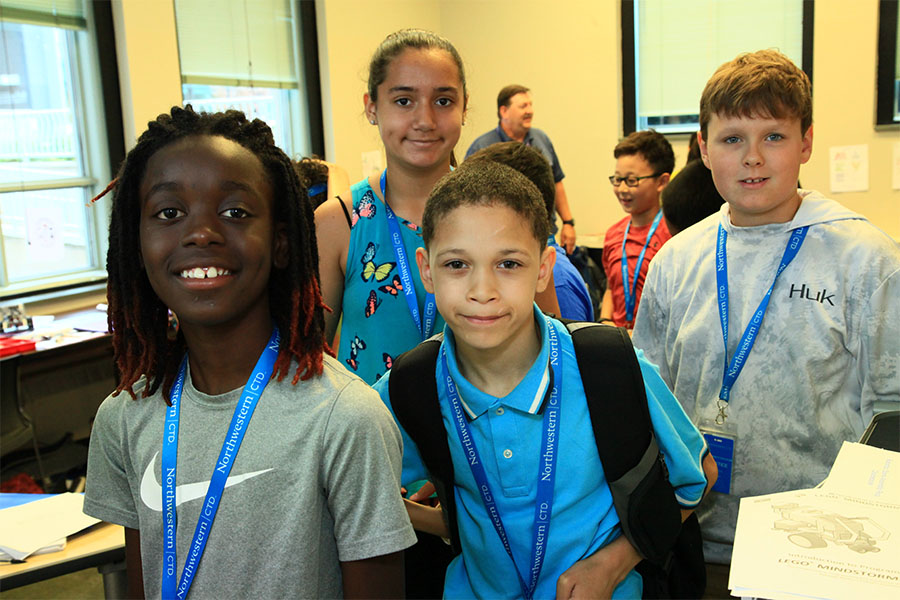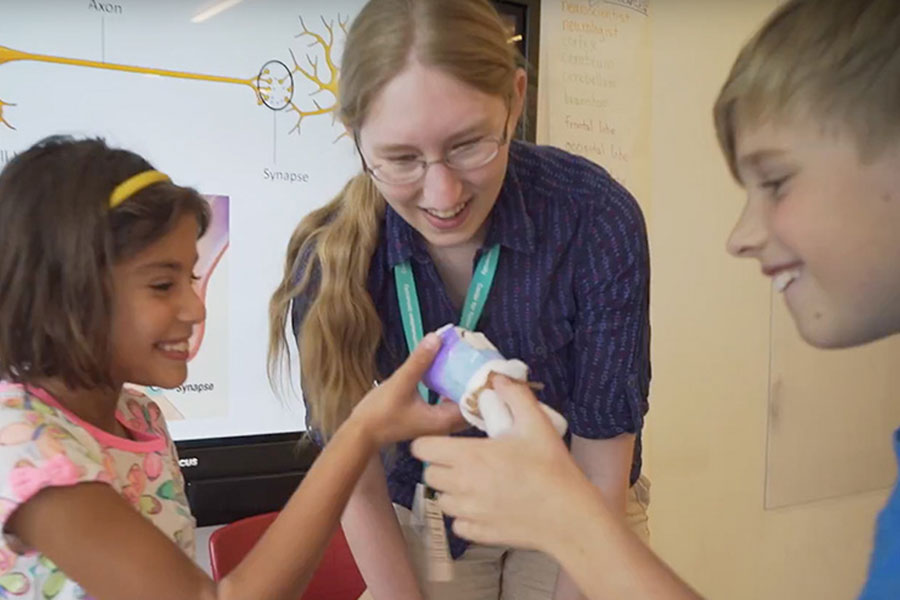Broadening the Approach to Identification for Gifted Services
CTD has provided program design support and professional learning to West Chicago Elementary School District 33 and is starting a five-year Javits Grant with the district this year.
By Ed Finkel
When Whitnie Del Toro first joined West Chicago Elementary School District 33 in suburban DuPage County, Illinois, as an elementary school teacher, the district was identifying gifted-and-talented students through the old-school, take-one-test methodology, solely using a test score to determine who was “in” or “out” of a narrowly defined set of services.
But this quick, one-criteria process was very limited in which students it identified as needing enrichment services in the district, which is about 80% Hispanic and 60% English-language-learners, says Del Toro, who is now District 33’s assistant director for teaching and learning.
When she became an elementary school gifted specialist in 2015, the district piloted a program with Del Toro serving as a full-time gifted specialist in one building, Currier Elementary. There, she taught enrichment reading for third through fifth graders as well as accelerated math for fifth graders, while supporting enrichment math teachers for third and fourth graders.
 District 33 also switched to the more broad-based Body of Evidence approach to identifying students in need of advanced learning services. This process considers a variety of data sources to build a student profile of strengths and determine the need for services. This has resulted, over time, in growth from a small number of students district-wide, to around 20 students per grade, per building, receiving some degree of enrichment or accelerated services.
District 33 also switched to the more broad-based Body of Evidence approach to identifying students in need of advanced learning services. This process considers a variety of data sources to build a student profile of strengths and determine the need for services. This has resulted, over time, in growth from a small number of students district-wide, to around 20 students per grade, per building, receiving some degree of enrichment or accelerated services.
The pilot project’s success prompted the district to expand this new slate of services to all elementary schools, with a gifted education specialist in each building who offers enrichment and accelerated language arts and math.
By the 2020-21 school year, the Gifted and Talented Education (GATE) approach had been built out to its current form, with a K-2 enrichment teacher and 3-5 gifted specialist in each building, advanced classes at Leman Middle School, and a full-time lead GATE teacher for the entire district. In addition, District 33 was drawing upon gifted education experts at Center for Talent Development to provide consulting services, Del Toro says.
“We still use the Body of Evidence approach, looking at, are our students maintaining consistency with their test scores? Is what we’re doing working? Are our students growing and succeeding?” she says. Part of that involves tracking them once they enter West Chicago Community High School District 94, to see if students are continuing on to success in honors classes. “Because of our large population of language learners, we have to differentiate between language acquisition barriers and academic barriers,” she says.
The broadened approach to identification and services enables District 33 to be inclusive, accounting for not only students’ language needs but also their widely varied life experiences, including recent immigration to the United States as well as the various ways in which they received schooling in their home countries, Del Toro says.
“The Body of Evidence approach allows us to look at the student more holistically, so that we are not missing any students, and we’re not saying, ‘Oh, because you’re a language-learner, or because you come from a different country, you don’t qualify,’” she says.
Having a full-time gifted services teacher in each building has been essential. “When you’re a half-time teacher, your time is very limited, so I think that almost forced schools to be super-super-selective in who they were choosing to receive services,” Del Toro says. “[The changes] opened up the ability to be more inclusive and say, ‘OK, so maybe we’ve identified these students, and these students are in our [accelerated] program, but we still have this cluster of students who are discrepant from their peers, and we need to provide them something [enrichment-based].’”
But it wasn’t just the added personnel. “It was also just remembering that one test score can’t define a student,” she says. “We know that even the most capable student, could not be a good test-taker. We didn’t want that to be the reason why a student didn’t qualify for services. The whole Body of Evidence approach helped with that.”
The GATE program also has supported families through a Parent Advisory Committee that meets once a trimester to hear updates on test data, learn about and give feedback on programmatic changes, and plan events for the program, Del Toro says. “It’s the parents of students specifically in our GATE program,” she says. “I also have teachers and building administrators [involved].”
Responsive Services by Grade Level and Intensity of Need
What this new approach looks like evolves depending on the student’s grade level, Del Toro says. In K-2, enrichment takes place in “push-in” groups in the classroom. “Those are very flexible,” she says. “They use pre-assessment data, a lot of the time, to say, ‘OK, who’s mastered these upcoming standards. I’m going to work with this group of students, and we’re going to work on X, Y and Z because they’ve already shown mastery of the standard.’ … We’re developing and fostering talents, providing enrichment for all students, building on their strengths, before we start the formal identification process in the third grade.”
The district continues to build out its continuum of services, to make sure students have access to the learning environment that best meets their needs, particularly if those needs go well beyond grade-level expectations and standards. In third through fifth grade, this can mean either push-in enrichment in the classroom or pull-out accelerated one-year-above curriculum. By middle school, students can be as much as two years above grade level in math, reaching geometry by the eighth grade.
CTD’s Role
Over the past few years, as the GATE program has become fully established, Del Toro and others at District 33 have consulted with CTD staff including Susan Corwith, CTD director, and Melissa Hinshaw, coordinator of assessment; as well as other experts in the area like Jeanine Bushias, gifted coordinator for DuPage Regional Office of Education and past president of the Illinois Association for Gifted Children.
They have provided professional development and training to staff, deepening understanding of the Body of Evidence approach, and undertaking a SWOT (strengths, weaknesses, opportunities, threats) audit that led to the most recent changes entering the 2020-21 school year, Del Toro says.
“And then they were still there to support us, whether we needed extra training about, ‘What is, truly, enrichment?’ Or, ‘How do we support our K-2 enrichment teachers, and what does that mean? Like, what kind of strategies should we be using?’” she says. “They helped us with the overall model. I’m in constant contact with them.”
Bottom line, Del Toro believes that District 33’s changes in gifted and talented identification have led to a more inclusive approach in the majority Hispanic, majority ELL district. “I want it to mirror” the district, she says. “And we have a lot of work to do with that part, don’t get me wrong, but it’s much, much better. … We’ve seen more and more kids identified and receive those opportunities, more and more of our Hispanic students, our multilingual learners.”
At the same time, Del Toro says, an increasing number of District 33 students are scoring higher—above the 50th, 75th or 90th percentile—in nationally normed assessments. “Especially at the middle-school level, we still have a lot of work to do in making sure that we are supporting our kids and getting them to where they need to go,” she says. “But we are definitely on a good trajectory.”
For more details about District 33, please visit their website.

